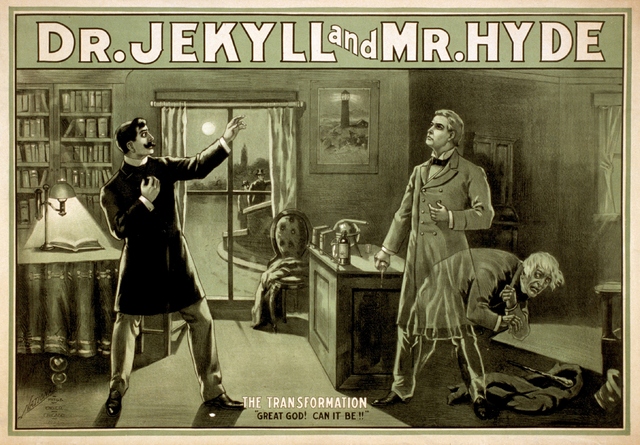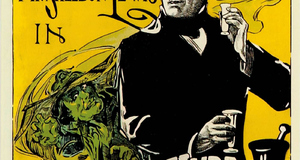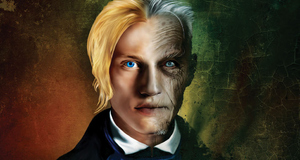The Anxiety of the Unforseen in Stevenson's Dr. Jekyll and Mr. Hyde
By
2016, Vol. 8 No. 11 | pg. 1/1
KEYWORDS:
Robert Louis Stevenson typifies an anxiety shared by many prolific Victorian writers: that God will disappear as human psychology is readily researched and understood. Such a concern is evident in Stevenson’s personal experiences and writings, wherein he passionately expresses the belief that there is no such thing as definitive evil or good in a person, a medieval notion that had survived through the Romantic movement and until the time of skeptical Victorian writers. Following the example of his fellow Victorians, Stevenson created a character, Mr. Hyde, who exemplifies the concentrated evil present in not some, but all people. In the short novel in which Hyde appears, Strange Case of Dr. Jekyll and Mr. Hyde, Stevenson portrays Jekyll’s experiment as a failed attempt at reconciliation of faith and science in regards to questions of human nature and character. Through allusions to and inversions of past Romantic notions of nature and morality, he presents Mr. Hyde as a paradigm of the unforeseen and unwanted horrors that intriguing, yet uncertain discoveries may entail. In Father Damien, An Open Letter to the Reverend Dr. Hyde of Honolulu, Stevenson expresses an understanding that a person’s religion does determine his morality. He notes that despite the fact that both Hyde and the missionary Damien (the man whose sainthood he’s defending) are religious men with similar goals for the Hawaiian lepers, Hyde, simply because Damien is a Catholic, finds petty reasons to discredit him (such as poor hygiene and alleged licentiousness). While Stevenson concedes that Damien was “indiscreet and officious” and could not help “human grumbling” when faced with making sacrifices, he emphasizes that he learned a “mania for doctoring” regardless (25).This is in contrast to Hyde, who, despite making no such effort, considers his religious beliefs (and by extension, himself) superior to Damien in every way. Hyde, then, serves as the model for the character who shares his name: he is consumed with so much hypocrisy and mercilessness that he closely resembles pure evil, and is perhaps more “in tune” with his evil side for taking “pleasure to find and publish” Damien’s faults and failures (30). Damien, on the other hand, can be viewed as more in touch with his good side for having “honesty of mind” to acknowledge such faults (29). It becomes clear, then, that Damien, along with Stevenson himself, serve as templates for Dr. Jekyll, whose Biblical allusions in the novel’s closing narrative appear to characterize him as a man who is unambiguously religious, but with human flaws (in the case of Damien), or at least once religious, but now skeptical (in the case of Stevenson). Moreover, Jekyll’s description of Hyde’s antics as “apelike” in the same narrative suggests Stevenson’s distaste for the possible negative ramifications of Darwinian evolution (Stevenson 874). Also, Jekyll confesses himself the “chief of sinners,” and “sufferers,” suggesting he shows remorse on a spiritual level and believes in divine retribution (Stevenson 849). Nonetheless, he clearly states he is a proponent of “transcendental medicine” and shuns “narrow and material views,” characterizing him as similar to Damien in his earnestness to help others through innovation: Damien creates a sanctuary for the lepers, while Jekyll seeks to solve “those provinces of good and ill which divide the compound of man’s dual nature” (Stevenson 863-64). Still, he holds flexible views about God and the mechanisms of human personality (much like Stevenson). Certain subtleties in the text also connect Stevenson to Jekyll. G.K. Chesterton notes, for instance, that the story, though presented as if taking place in London, feels rather like it takes place in Stevenson’s native Edinburgh, with Jekyll’s “horror of mixing his reputation with moral frailty” being something with which Stevenson could relate, as it would be a concern for “the upper middle classes in solid Puritan communities” of Edinburgh (183). Stevenson’s story came from discreet defiance of social pressure to adhere to religion, and so Jekyll’s experiment allegorically represents Stevenson’s writing of the story itself. His agnostic sensibilities aside, Stevenson’s attachment to the Romantics is apparent in the novel’s Romantic allusions, all of which are transformed to serve the story’s purpose as a sophisticated work of psychological horror. Stevenson evidently was not fond of the late Victorian era’s large market for popular fiction. Patrick Brantlinger notes this, proposing the novel is, in fact, “an unconscious allegory about the commercialization of literature” (198). Jekyll’s “great esteem” for “pious work,” despite being a scientist, is the result of him being the surrogate for an agnostic author with Romantic sensibilities—one who leisure reads as a Romantic would, never touching Victorian popular fiction (Stevenson 857). Stevenson’s nostalgia and subsequent retooling of the Romantics is most obvious in his over-arching theme of double personality. Returning to the Open Letter, the “bad hygiene” that Dr. Hyde attributes to Damien seems to transfer to the character of Mr. Hyde, Jekyll’s “bad side,” whose physical “dirtiness” is apparent from people’s reactions to him. Though he establishes in his letter to Dr. Hyde that he thinks physical appearance or dirtiness irrelevant if it does not hinder good works, Stevenson, because he is satirizing the medieval idea of ugliness being associated with character, presents Hyde as inspiring “a strong feeling of deformity” for a reason that is apparent, yet impossible to grasp (Stevenson 836). This mystery of the ugliness of Mr. Hyde, here, becomes an inversion of the Romantic notion of the mystery of the beautiful power of nature. While the Romantics had no desire to understand nature and were content to bask in the sublimity of its mysteriousness, the Victorians, as Jekyll reflects, seek the “greed of curiosity” (Stevenson 863). The inexplicable ugliness of Mr. Hyde, then, becomes something undesirable and impossible to comprehend not because it is sublime, but because it is ghastly. Stevenson also owes his attention to features to his forerunner Browning, who, in “Fra Lippo Lippi,” suggests through the words of the title character that “watching folks’ faces” is an adequate psychological evaluation of character (151). This theory is comforting to Stevenson in that it does not completely disregard former notions, though it does complicate human morality by disqualifying mere deformity as an absolute factor in determining one’s character. Mr. Hyde’s physical appearance thus cannot explain his intrinsic evil. Rather, Stevenson’s explanation for primal evil in humans is that it is dormant until activated. This stands in contrast to Wordsworth’s idea that primal goodness in humans is present in an ideal pre-existence of the soul which diminishes into a mere intimation in childhood before fading away as a person grows into an adult. In his quintessential work on this Neo-Platonist idea, Ode: Intimations of Immortality, Wordsworth insists that “our birth is both a sleep and a forgetting” (23). Stevenson counters this in a scene from Lanyon’s narrative in which Lanyon encounters Hyde. Hyde’s smallness is emphasized with the image of his clothes “being enormously too large for him,” impressing the image of a child (861). Unlike a child as envisioned by the Romantics, Hyde does not remind of the lost “radiance” and “splendor” of the natural world (Wordsworth 39). Rather, he causes feelings of “incipient rigor,” such as that which Lanyon senses. He can only ascribe the sudden chill to a perception that lies not in a past pre-existent state but deep in “the nature of man,” turning on “some nobler hinge than the principle of hatred” (Stevenson 861). In other words, Stevenson inverts Wordsworth’s Neo-Platonism by having humans capable not of sensing a world removed from themselves, but a world within themselves—not a heavenly far-gone world, but a dark world of “black secrets,” as Utterson says, palpable in the presence not of children, but of Mr. Hyde (Stevenson 841). In addition to the Romantic idea of sublime knowledge of nature, Stevenson also manipulates the means by which such knowledge is transferred to mortals. The “incipient rigor” emanated by Hyde can be compared to the winter weather of Coleridge’s “Frost at Midnight,” which expresses his sentimentality for his infant son’s potential to learn from nature “the lovely shapes and sounds intelligible of that eternal language, which thy God utters” (291). It is the “frost,” performing its “secret ministry,” that leads him to the revelation of the child’s potential, and it this notion of feelings and imagination being sent forth by the forces of nature (specifically by the wind) that is inverted in Stevenson’s handling of both setting and characters’ emotions (Coleridge 290). Stevenson’s London is established as a cold and dark place, and nature seems not to deliver divine mysteries, but rather, as Jekyll puts it, “sufferings and terrors so unmanning” (Stevenson 849-50). Victorian essayist John Henry, Cardinal Newman spoke of knowledge as “something which grasps what it perceives through sense,” and Stevenson purposely reflects this notion in his characters’ attitudes (93). As noted by Vladimir Nabokov, he appeals to Victorian sensibilities by having the fantasy pass through the minds of “matter-of-fact” persons to make it “plausible” (186). Thus, for the characters, hard evidence is favored over intuitions, seen when Poole relates a feeling “in [his] marrow kind of cold and thin” upon seeing Mr. Hyde, and must admit it is “not evidence” of Hyde’s malevolence, though “a man has his feelings” (Stevenson 855). Stevenson distorts the Romantic motif of the wind in the same episode: when Poole and Utterson go to investigate Jekyll’s theatre and get nearer to Mr. Hyde, the wind obscures rather than enlightens, “toss[ing] the light of the candle to and fro about their steps” (856). Ultimately, aided by his dark and confusing portrayal of the world, Stevenson portrays reactionary feelings as revealing tangible horrors rather than beautiful mystical truths, reflecting the change of interest from enigmatic natural power to hard science that accompanied the Victorian era. In doing so, he follows in the footsteps of such earlier Victorians as Alfred, Lord Tennyson, who describes the artist’s burden in “The Lady of Shallott,” wherein the title character, a seamstress, becomes “sick of shadows” upon falling in love with Sir Lancelot (42). It is the reverse with Stevenson’s characters: through Hyde, as Nabokov puts it, the “hidden artist” surfaces from within sensible people like Utterson (186). Hyde does not capture, but rather “enslave[s]” the imagination, in contrast to the Lady of Shallott, whose is enslaved by her imagination (Stevenson 838). Hyde’s nature can by explained in scientific, not imaginative terms. For Jekyll, he inspires feelings of “distress that no fancy can exaggerate” (Stevenson 860). Such a feeling is very human and all-too-real when compared to the “emotion[s] recollected in tranquility” that Wordsworth, in his Preface to the Lyrical Ballads, describes as causing “spontaneous overflow of powerful feelings” (146). Last of note is the huge debt Stevenson owes to Mary Shelley’s Frankenstein, the Romantic work from which he imitates a story and complex narrative structure that he appropriates for the purpose of reflecting Victorian anxieties. Like Frankenstein, Strange Case of Dr. Jekyll and Mr. Hyde falls under the genre of “Gothic fiction,” which, in the words of Peter K. Garrett, has a “characteristic complication of narrative form and multiplication of voices” as to deepen the mystery, suggesting the “uncertain success” of “control of meaning” (196). The narrative device itself, like in Frankenstein, reflects in form the story’s theme of a force that cannot be contained; however, in Frankenstein, this force is the monster, while it is doubly Hyde and science in Stevenson’s novel. Stevenson inverts the story of Frankenstein itself by gradually revealing the monstrous nature of a human creator rather than the human nature of a monstrous creation. He achieves this with multiple narratives, in the same vein as Shelley. Like in Frankenstein, the narratives gradually reveal the monstrous perpetrators of a crime through the perpetrator’s eventual confession (the murders of William Frankenstein and Danvers Carew, respectively). In his Victorian appropriation of the device, Stevenson introduces a qualification to the confession found also in Browning’s similarly multi-narrative The Ring and the Book: here, too, a crime (adultery) is confessed, but Pompilia, in her confession, resigns to the fact that God is in ultimate control and that “all human plans and projects come to nought,” as evidenced by her damning situation (380). Such “plans and projects” might include Jekyll’s experiment, which comes to nought by killing him rather than ushering in an age of beneficial scientific discovery. So, while Victor’s monster escapes after his confession to do more damage after being shunned by his creator, Jekyll’s monster, after Jekyll’s (and, by extension, Hyde’s) confession, becomes unleashed upon the world after being pursued by his creator. As a result, he goes on a destructive rampage—a rampage similar to Victor’s monster’s and science’s. It is all one rampage: the rampage against God. From this, it is clear that Stevenson inverts the main thrust of Frankenstein: Victor abandoning his creation. Jekyll does not abandon Hyde; rather, Hyde abandons Jekyll. The ultimate theme of the two novels is that the monstrous side of living creatures is unavoidable and will be triggered in some way. In the case of Victor’s monster, it is triggered by rejection, a type of harm. The harming of a creation causing disaster for the perpetrator is a Romantic idea best exemplified by the senseless crime against God’s creature, the albatross, committed by the title character in Coleridge’s “The Rime of the Ancient Mariner.” Stevenson fashions the idea of harming God’s creation into the context of scientific fervor. Jekyll is met with disaster because he harmed what is God’s in the sense that he brought forth and sought to manipulate deep-seated aspects of creation that only God ought control. Strange Case of Dr. Jekyll and Mr. Hyde, then, stands in contrast to Frankenstein in that it is not about the consequences that come with creating life, but with revealing life: life, whose natural mechanisms are tantalizingly curious, yet incomprehensibly hideous, like Mr. Hyde. Throughout The Strange Case of Dr. Jekyll and Mr. Hyde, Stevenson expresses an awareness of the consequences that are sure to arise should psychology be able to incontrovertibly define the origins of human character. If it is true that evil is inherent in all people or at least the result of people’s experience rather than divine providence, then it becomes more difficult to say with certainty that God had any role in forming the hearts and minds of human beings. Using his own experience with religious hypocrites as well as flawed but good people, Stevenson crafts a story that represents the world as both horrific and curious in the way it affects humans. Stevenson does not dismiss Romantic explanations of nature and human influence, but rather inverts and darkens them that they may reflect the godlessness of science. Jekyll’s experiment is indeed fanciful, “transcendental,” as he names it, but it cannot match the tranquil acceptance of a mysterious, Romantic world. The age has simply changed, and people yearn to satisfy curiosity, but as Jekyll admits, “It is one thing to mortify curiosity, another to conquer it” (Stevenson 850). Science might not fully satisfy all humanity yearns to know, Stevenson suggests, and if it continues to cast doubt on the existence of God, perhaps the Romantics were right in leaving some mysteries unsolved. ReferencesBrantlinger, Patrick. “An Unconscious Allegory about the Masses and Mass Literacy.” Strange Case of Dr. Jekyll and Mr. Hyde: An Authoritative Text, Backgrounds and Contexts, Performance Adaptations, Criticism. By Robert Louis Stevenson. Ed. Katherine Linehan. New York: Norton, 2003. 197-204. Print. Browning, Robert. Robert Browning’s Poetry: Authoritative Texts, Criticism. Ed. James F. Loucks and Andrew M. Stauffer. 2nd ed. New York: Norton, 2007. Print. Chesterton, G.K. “The Real Stab of the Story.” Strange Case of Dr. Jekyll and Mr. Hyde: An Authoritative Text, Backgrounds and Contexts, Performance Adaptations, Criticism. By Robert Louis Stevenson. Ed. Katherine Linehan. New York: Norton, 2003. 183-84. Print. Coleridge, Samuel Taylor. “Frost at Midnight.” The Norton Anthology of English Literature. Ed. Stephen Greenblatt. 9th ed. Vol. 2. New York: Norton, 2012. 290-92. Print. Garrett, Peter K. “Instabilities of Meaning, Morality, and Narraton.” Strange Case of Dr. Jekyll and Mr. Hyde: An Authoritative Text, Backgrounds and Contexts, Performance Adaptations, Criticism. By Robert Louis Stevenson. Ed. Katherine Linehan. New York: Norton, 2003. 189-97. Print. Nabokov, Vladimir. “A Phenomenon of Style.” Strange Case of Dr. Jekyll and Mr. Hyde: An Authoritative Text, Backgrounds and Contexts, Performance Adaptations, Criticism. By Robert Louis Stevenson. Ed. Katherine Linehan. New York: Norton, 2003. 184-88. Print. Newman, John Henry. The Idea of a University. N.p.: Longman’s, Green, and Company, 1905. Google Books, 13 Dec. 2007. Web. 11 Apr. 2015. Stevenson, Robert Louis. Father Damien, An Open Letter to the Reverend Dr. Hyde of Honolulu. N.p.: Scribner’s, 1916. Google Books, 7 Nov. 2008. Web. 11 Apr. 2015. Stevenson, Robert Louis. The Strange Case of Dr. Jekyll and Mr. Hyde. The Norton Anthology of English Literature. Ed. Stephen Greenblatt. 9th ed. Vol. 2. New York: Norton, 2012. 832-74. Print. Tennyson, Alfred. Tennyson's Poetry: Authoritative Texts, Contexts, Criticism. Ed. Robert W. Hill. 2nd ed. New York: Norton, 1999. Print. Wordsworth, William. Ode: Intimations of Immortality from Recollections of Early Childhood. N.p.: D. Lothrop and Company, 1884. Google Books, 12 Sep. 2007. Web. 11 Apr. 2015. Wordsworth, William. Preface to Lyrical Ballads, with Pastoral and Other Poems. The Norton Anthology of English Literature. Ed. Stephen Greenblatt. 9th ed. Vol. 2. New York: Norton, 2012. 136-147. Print. Suggested Reading from Inquiries Journal
Inquiries Journal provides undergraduate and graduate students around the world a platform for the wide dissemination of academic work over a range of core disciplines. Representing the work of students from hundreds of institutions around the globe, Inquiries Journal's large database of academic articles is completely free. Learn more | Blog | Submit Latest in Literature |



















